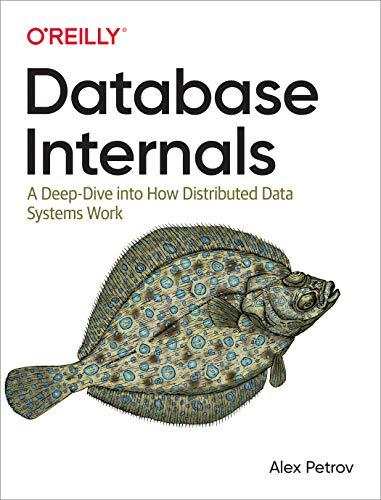Question
can you help me to write the program in racket or scheme language. help in solve to do part #lang racket ;; Implementing PageRank ;;
can you help me to write the program in racket or scheme language. help in solve to do part
#lang racket
;; Implementing PageRank
;;
;; PageRank is a popular graph algorithm used for information
;; retrieval and was first popularized as an algorithm powering
;; the Google search engine. Details of the PageRank algorithm will be
;; discussed on a video. You must define several functions
;; that implement the PageRank algorithm in Racket.
;; - You may want to define "helper functions" to break up complicated
;; function definitions.
;;
;; - Consider the provided functions graph? and pagerank? carefully
(provide graph?
pagerank?
num-pages
num-links
get-backlinks
mk-initial-pagerank
step-pagerank
iterate-pagerank-until
rank-pages)
;; This program accepts graphs as input. Graphs are represented as a
;; list of links, where each link is a list `(,src ,dst) that signals
;; page src links to page dst.
;; (-> any? boolean?)
(define (graph? glst)
(and (list? glst)
(andmap
(lambda (element)
(match element
[`(,(? symbol? src) ,(? symbol? dst)) #t]
[else #f]))
glst)))
;; Our implementation takes input graphs and turns them into
;; PageRanks. A PageRank is a Racket hash-map that maps pages (each
;; represented as a Racket symbol) to their corresponding weights,
;; where those weights must sum to 1 (over the whole map).
;; A PageRank encodes a discrete probability distribution over pages.
;;
;; The test graphs for this assignment adhere to several constraints:
;; + There are no "terminal" nodes. All nodes link to at least one
;; other node.
;; + There are no "self-edges," i.e., there will never be an edge `(n0
;; n0).
;; + To maintain consistenty with the last two facts, each graph will
;; have at least two nodes.
;; + There will be no "repeat" edges. I.e., if `(n0 n1) appears once
;; in the graph, it will not appear a second time.
;;
;; (-> any? boolean?)
(define (pagerank? pr)
(and (hash? pr)
(andmap symbol? (hash-keys pr))
(andmap rational? (hash-values pr))
;; All the values in the PageRank must sum to 1. I.e., the
;; PageRank forms a probability distribution.
(= 1 (foldl + 0 (hash-values pr)))))
;; Takes some input graph and computes the number of pages in the
;; graph. For example, the graph '((n0 n1) (n1 n2)) has 3 pages, n0,
;; n1, and n2.
;;
;; (-> graph? nonnegative-integer?)
(define (num-pages graph)
'todo)
;; Takes some input graph and computes the number of links emanating
;; from page. For example, (num-links '((n0 n1) (n1 n0) (n0 n2)) 'n0)
;; should return 2, as 'n0 links to 'n1 and 'n2.
;;
;; (-> graph? symbol? nonnegative-integer?)
(define (num-links graph page)
'todo)
;; Calculates a set of pages that link to page within graph. For
;; example, (get-backlinks '((n0 n1) (n1 n2) (n0 n2)) n2) should
;; return (set 'n0 'n1).
;;
;; (-> graph? symbol? (set/c symbol?))
(define (get-backlinks graph page)
'todo)
;; Generate an initial pagerank for the input graph g. The returned
;; PageRank must satisfy pagerank?, and each value of the hash must be
;; equal to (/ 1 N), where N is the number of pages in the given
;; graph.
;; (-> graph? pagerank?)
(define (mk-initial-pagerank graph)
'todo)
;; Perform one step of PageRank on the specified graph. Return a new
;; PageRank with updated values after running the PageRank
;; calculation. The next iteration's PageRank is calculated as
;;
;; NextPageRank(page-i) = (1 - d) / N + d * S
;;
;; Where:
;; + d is a specified "dampening factor." in range [0,1]; e.g., 0.85
;; + N is the number of pages in the graph
;; + S is the sum of P(page-j) for all page-j.
;; + P(page-j) is CurrentPageRank(page-j)/NumLinks(page-j)
;; + NumLinks(page-j) is the number of outbound links of page-j
;; (i.e., the number of pages to which page-j has links).
;;
;; (-> pagerank? rational? graph? pagerank?)
(define (step-pagerank pr d graph)
'todo)
;; Iterate PageRank until the largest change in any page's rank is
;; smaller than a specified delta.
;;
;; (-> pagerank? rational? graph? rational? pagerank?)
(define (iterate-pagerank-until pr d graph delta)
'todo)
;; Given a PageRank, returns the list of pages it contains in ranked
;; order (from least-popular to most-popular) as a list. You may
;; assume that the none of the pages in the pagerank have the same
;; value (i.e., there will be no ambiguity in ranking)
;;
;; (-> pagerank? (listof symbol?))
(define (rank-pages pr)
'todo)
Step by Step Solution
There are 3 Steps involved in it
Step: 1

Get Instant Access to Expert-Tailored Solutions
See step-by-step solutions with expert insights and AI powered tools for academic success
Step: 2

Step: 3

Ace Your Homework with AI
Get the answers you need in no time with our AI-driven, step-by-step assistance
Get Started


